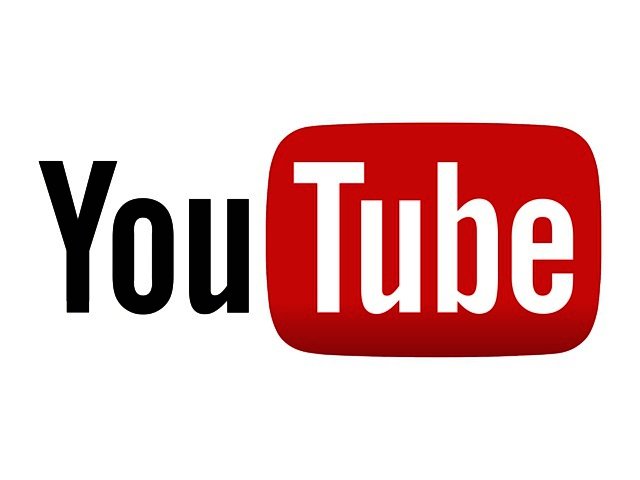More than quarter of Americans get news on YouTube - PRC
By Staff Writer 29 September 2020 | Categories: news
TechSmart News sponsored by:
About a quarter of all U.S. adults (26%) say they get news on YouTube, the Google-owned video-sharing website. A major new Pew Research Center study examined the news landscape on YouTube, and found an ecosystem in which established news organisations and independent news creators thrive side by side – and, consequently, one where established news organisations no longer have full control over the news Americans watch.
The research notes about one-in-five YouTube news consumers (23%) say they often get news from YouTube channels affiliated with external news organisations, while an identical portion of consumers (23%) say they often get news from independent channels, defined in this study as “news channels that do not have a clear external affiliation.” And indeed, these two types of channels are common across the platform, with 49% of popular YouTube news channels being affiliated with news organisations and 42% not having an external affiliation.
To better understand Americans’ experiences with news on YouTube, researchers used two distinct methods to conduct this study. The first was a representative survey of 12,638 U.S. adults conducted Jan. 6-20, 2020, on the Center’s American Trends Panel. It finds that among YouTube news consumers, defined in the report as those getting news on the platform, a majority (72%) say the platform is either an important (59%) or the most important (13%) way they get their news, and most do not see very big problems with getting news from the site.
The survey asked YouTube news consumers about six issues related to the platform. While no more than three-in-ten YouTube news consumers said any of the issues asked about were “very big” problems, majorities say a few of these are “moderately big” problems – including misinformation, political bias, YouTube limiting advertising revenue for video creators (also known as demonetization), and censorship by the platform.
Second, researchers conducted a content analysis of the 377 most popular YouTube news channels (in November 2019) and the contents of the YouTube videos published by the 100 channels with the highest median number of views (in December 2019.) For this content analysis, researchers used a combination of computational methods and trained human coders to identify the most popular YouTube news channels and comb through thousands of videos looking for their topic, tone and other attributes (see Chapter 2 and the Methodology for details).
The Center’s content analysis finds that more than four-in-ten popular YouTube news channels (44%) are classified as being personality-driven, meaning that the channel is oriented around an individual – whether a journalist employed by a news organisation, or an independent host – and their personality is at the center of the channel and its content. This is particularly true of independent YouTube news channels, with 70% oriented around a specific personality. And the people at the center of these independent channels are often “YouTubers” (people who gained a following through their YouTube presence; 57% of all independent news channels) rather than people who were public figures before gaining attention on YouTube (13%).
Other key findings from this exploration of news on YouTube include:
Clear majorities of YouTube news consumers say that the news videos they watch on YouTube help them better understand current events (66%) and expect them to be largely accurate (73%). A similar share (68%) say the videos keep their attention and that they typically watch closely, rather than playing them in the background.
YouTube news consumers are about as likely to say they are primarily looking for opinions and commentary on the website (51%) as they are to say they are primarily seeking information and facts (i.e., “straight” reporting; 48%). And when asked in an open-ended question what makes the platform a unique place to get news, the most common responses relate to the content itself – including access to news sources outside the mainstream and the plethora of different opinions and views that are available on the platform.
Partisans see somewhat different problems when it comes to YouTube news. For example, Republicans and independents who lean Republican are more likely than Democrats and Democratic-leaning independents to say censorship, demonetisation and political bias are very big problems. Democrats, meanwhile, are more likely than Republicans to say misinformation and harassment are very big problems.
The content analysis suggests that some of the problems asked about may be a bigger concern when it comes to videos produced by independent YouTube news channels. In fact, videos about conspiracy theories were almost entirely concentrated among independent channels and virtually absent from videos produced by news organisation channels. Researchers analysed videos to determine the extent to which they covered specific unproven claims that were prominent in the news in late 2019 (including those related to QAnon, Jeffrey Epstein and anti-vaccine conspiracy theories.) Analysis of the nearly 3,000 videos posted by the 100 most viewed YouTube news channels in December 2019 finds that 21% of videos by independent channels mentioned at least one of the conspiracy theories studied. In contrast, just 2% of videos from news organisations mentioned at least one of these conspiracy theories.
Of the conspiracy theories studied, those collectively known as QAnon were the most commonly mentioned; 14% of the videos analysed from independent channels mentioned QAnon, compared with news organisation channels, which mentioned QAnon in 2% of analysed videos.
YouTube videos about the Trump administration make up the largest share of news videos posted during the period of study and receive more views than videos on other topics. In December 2019, roughly a third of videos from the most viewed YouTube news channels (36%) were primarily about President Trump’s impeachment, while 31% pertained to a range of domestic issues such as gun control, abortion or immigration. The 2020 election, which at that time centered around the Democratic Party’s primary, was the topic of just 12% of news videos. Videos about impeachment or Trump’s administration generally received more views than other videos – around 250,000 average views compared with an average of 122,000 views for videos on other topics. In addition, Trump was the most common video focus (the person or group the video discussed no matter the topic), at about a quarter of videos studied (24%), and those videos received more views – an average of 221,000 views vs. 157,000 average views for videos with a different focus.
An examination of the most popular YouTube news channels shows that the vast majority do not clearly state a political ideology on their channel page – regardless of whether the contents of their videos take an ideological slant. Only 12% of popular YouTube news channels explicitly include language about their political ideology in the channel description, with slightly more identifying as right-leaning (8%) than left-leaning (4%). Independent news channels, however, are somewhat more likely than news organisation channels to describe themselves in partisan terms and are more likely to say they lean to the right.
Compared with U.S. adults overall, YouTube news consumers are more likely to be young and male, and less likely to be White.
About a third of adult YouTube news consumers are under the age of 30 (34%), compared with 21% of all U.S. adults. And about seven-in-ten (71%) are under 50, compared with slightly more than half of the total adult population (55%).
-
YouTube news consumers also are more likely to be male (58%) than U.S. adults overall (48%).
-
YouTube news consumers are also more racially diverse. Half are White (50%), while 14% are Black and 25% are Hispanic. In contrast, 63% of U.S. adults are White, 12% are Black and 16% are Hispanic.
Most Read Articles

Have Your Say
What new tech or developments are you most anticipating this year?




